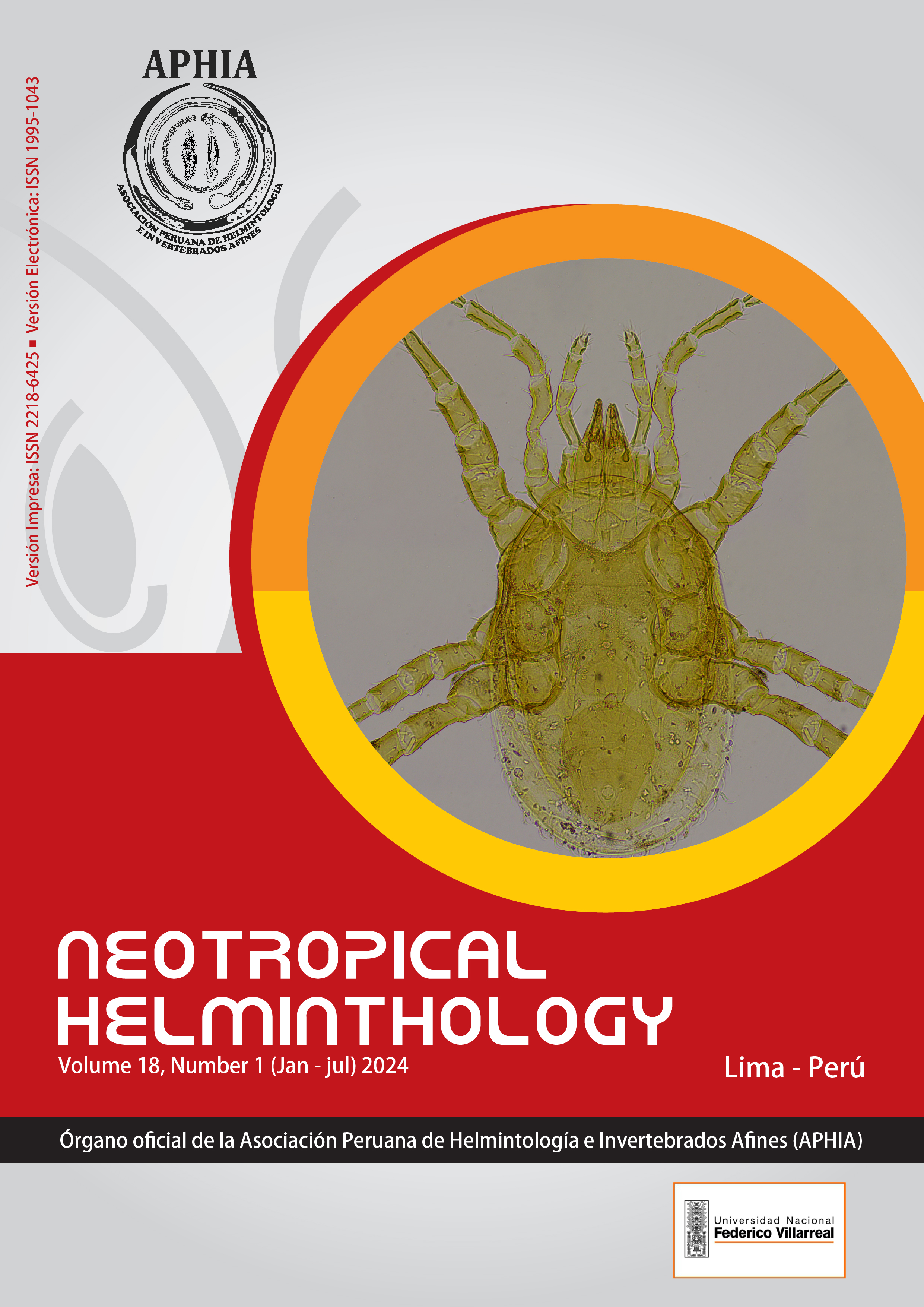High potential of zoonotic infections in soil of recreational areas of Maceió, Alagoas, Brazil.
DOI:
https://doi.org/10.62429/rnh20241811759Keywords:
Environmental pollution, Helminths, Neglected diseases, Parasitology, Protozoans, Strongyloides stercoralisAbstract
Neglected diseases pose a significant public health problem, particularly for impoverished communities, with parasitic diseases being a prominent concern. Soil plays a crucial role in sustaining parasitic structures, facilitating the spread of infection over prolonged periods. This study aims to evaluate soil contamination in recreational areas of Maceió( Brazil) and analyze the occurrence of various pathogenic species. A total of 42 soil samples were collected from recreational areas, with 21 from the surface and 21 from depth. Each sample was appropriately labeled, packaged, and transported to the laboratory for analysis. The HPJ (Hoffman, Pons, and Jenner) and Ritchie techniques were utilized to process the samples, followed by microscopic readings stained with Lugol. Of the samples analyzed, 34 were positive (80.95%) with multiparasitism, whose helminths being the most prevalent among the parasites found (74.22%). The study revealed that all recreational locations surveyed were contaminated with both helminths and protozoans. Regarding depth, the surface samples registered more contamination with 18 samples (52.94%) among the positive samples. The most commonly found parasite was Strongyloides stercoralis, with 28.86%. In conclusion, the study suggests that soil samples may serve as a precursor to zoonotic infection, highlighting the need for chemotherapeutic prophylactic measures in soils and the implementation of standardized measures by government bodies.
Downloads
Published
How to Cite
Issue
Section
License

This work is licensed under a Creative Commons Attribution-NonCommercial-NoDerivatives 4.0 International License.
OBJETO: El AUTOR-CEDENTE transfiere de manera TOTAL Y SIN LIMITACIÓN alguna al CESIONARIO los derechos patrimoniales que le corresponden sobre la (s) obra(s) tituladas: xxxxxxxxxxxxxxxx, por el tiempo que establezca la ley internacional. En virtud de lo anterior, se entiende que el CESIONARIO adquiere el derecho de reproducción en todas sus modalidades, incluso para inclusión audiovisual; el derecho de transformación o adaptación, comunicación pública, traducción, distribución y, en general, cualquier tipo de explotación que de las obras se pueda realizar por cualquier medio conocido o por conocer en el territorio nacional o internacional.
REMUNERACIÓN: La cesión de los derechos patrimoniales de autor que mediante este contrato se hace será a título gratuito.
CONDICIONES Y LEGITIMIDAD DE LOS DERECHOS: El AUTOR-CEDENTE garantiza que es propietario integral de los derechos de explotación de la(s) obra(s) y en consecuencia garantiza que puede contratar y transferir los derechos aquí cedidos sin ningún tipo de limitación por no tener ningún tipo de gravamen, limitación o disposición. En todo caso, responderá por cualquier reclamo que en materia de derecho de autor se pueda presentar, exonerando de cualquier responsabilidad al CESIONARIO.
LICENCIA DE ACCESO ABIERTO: El AUTOR-CEDENTE autoriza que manuscrito publicado en La Revista Neotropical Helminthology permanece disponible para su consulta pública en el sitio web https://www.neotropicalhelminthology.com/ y en los diferentes sistemas de indexación y bases de datos en las que la revista tiene visibilidad, bajo la licencia Creative Commons, en la modalidad Reconocimiento-No comercial- Sin Trabajos derivados –aprobada en Perú, y por lo tanto son de acceso abierto. De ahí que los autores dan, sin derecho a retribución económica, a la Asociación Peruana de Helmintología e Invertebrados Afines (APHIA), los derechos de autor para la edición y reproducción a través de diferentes medios de difusión.


 Numero 2 Volumen 19 - 2025 (versión Anticipada)
Numero 2 Volumen 19 - 2025 (versión Anticipada)














































